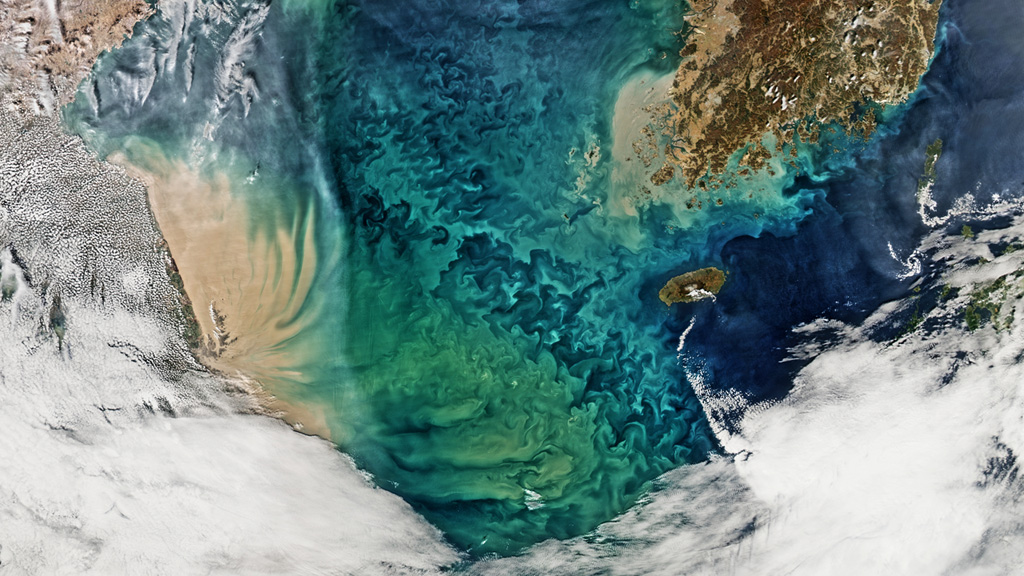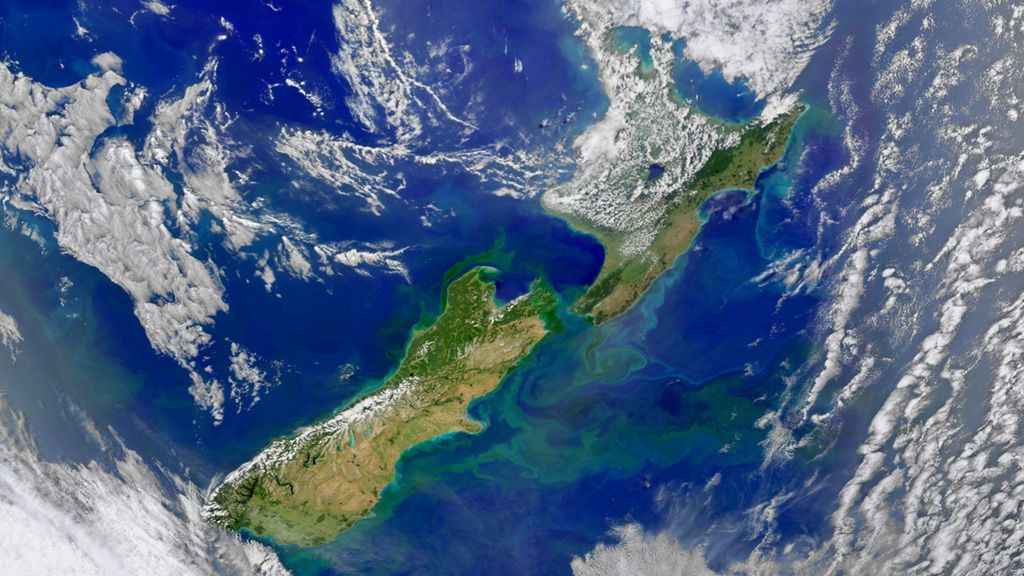Earth
ID: 11835

When tiny plants in the ocean bloom, they bloom for hundreds of miles, coloring the seas in dazzling shades of green and blue. Phytoplankton, the base of the marine food chain, explode in population when cold, nutrient-rich waters from rivers or the deep ocean rise and mix with sun-lit surface waters. Globally, phytoplankton blooms account for about half of the net photosynthesis on Earth and are major players in taking carbon out of the atmosphere and transferring it to the ocean. With the bloom comes a feeding frenzy, as fish and marine mammals flock to the microscopic feast that supports their populations that in turn support the human demand for fish. Daily ocean color measurements from instruments aboard NASA satellites have dramatically changed scientists' understanding of the complex biological and physical relationships between phytoplankton, marine ecosystems, and the global carbon budget. Explore the images to see blooms of phytoplankton captured from space.





Coloring The Seas






Story Credits
Please give credit for this item to:
NASA's Goddard Space Flight Center
Images courtesy of NASA/GSFC/Norman Kuring
NASA's Goddard Space Flight Center
Images courtesy of NASA/GSFC/Norman Kuring
Short URL to share this page:
https://svs.gsfc.nasa.gov/11835
Keywords:
SVS >> App
NASA Science >> Earth
NASA Earth Science Focus Areas >> Carbon Cycle and Ecosystems
https://svs.gsfc.nasa.gov/11835
Keywords:
SVS >> App
NASA Science >> Earth
NASA Earth Science Focus Areas >> Carbon Cycle and Ecosystems







